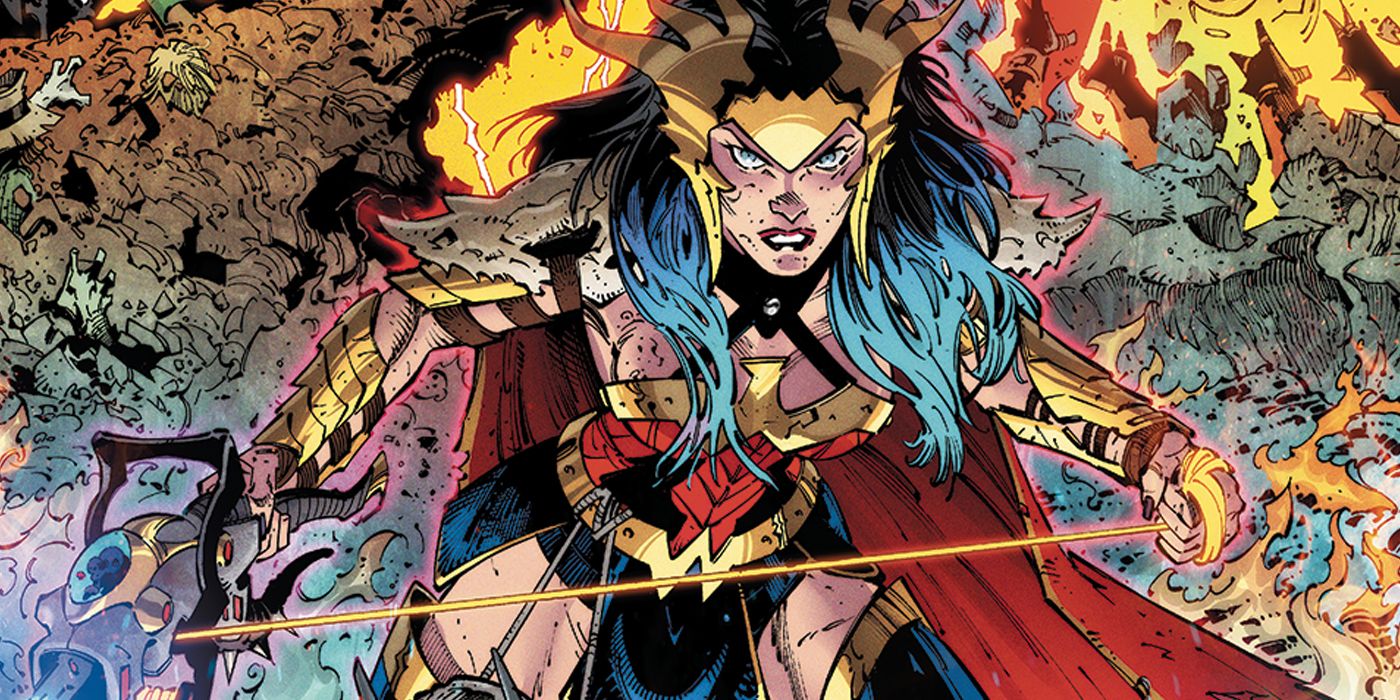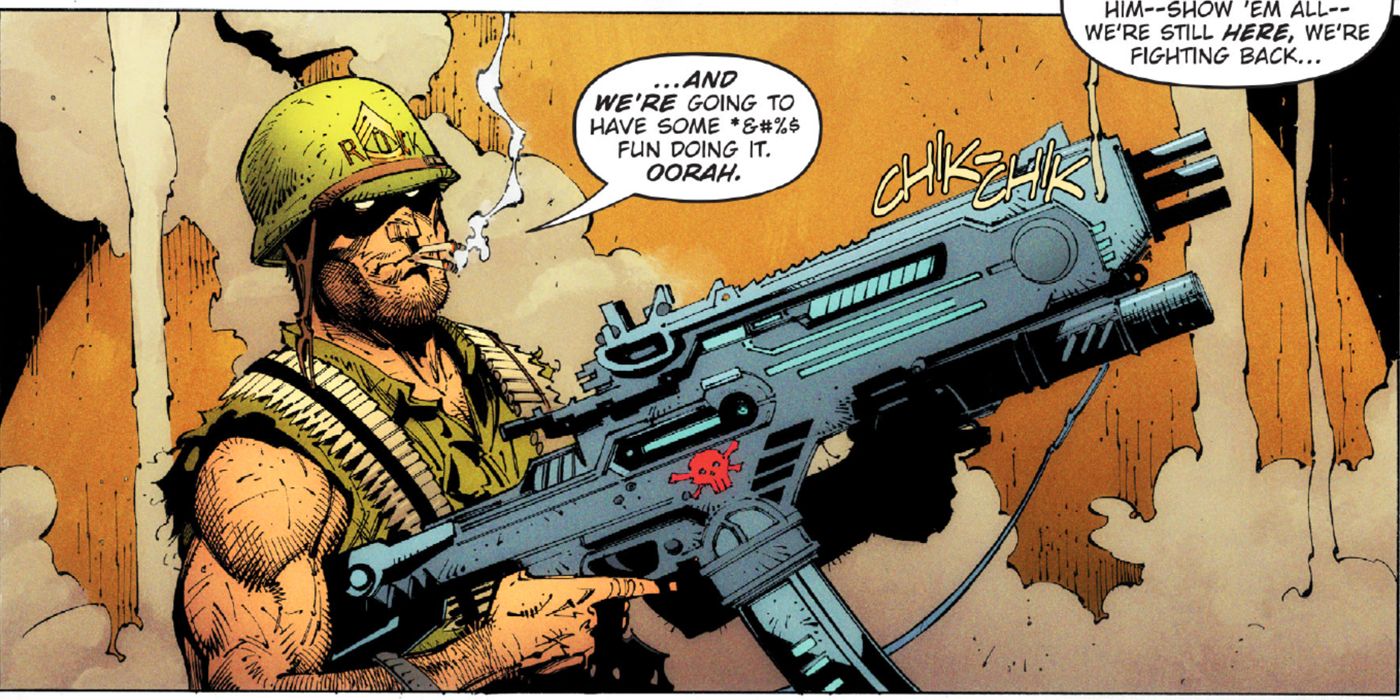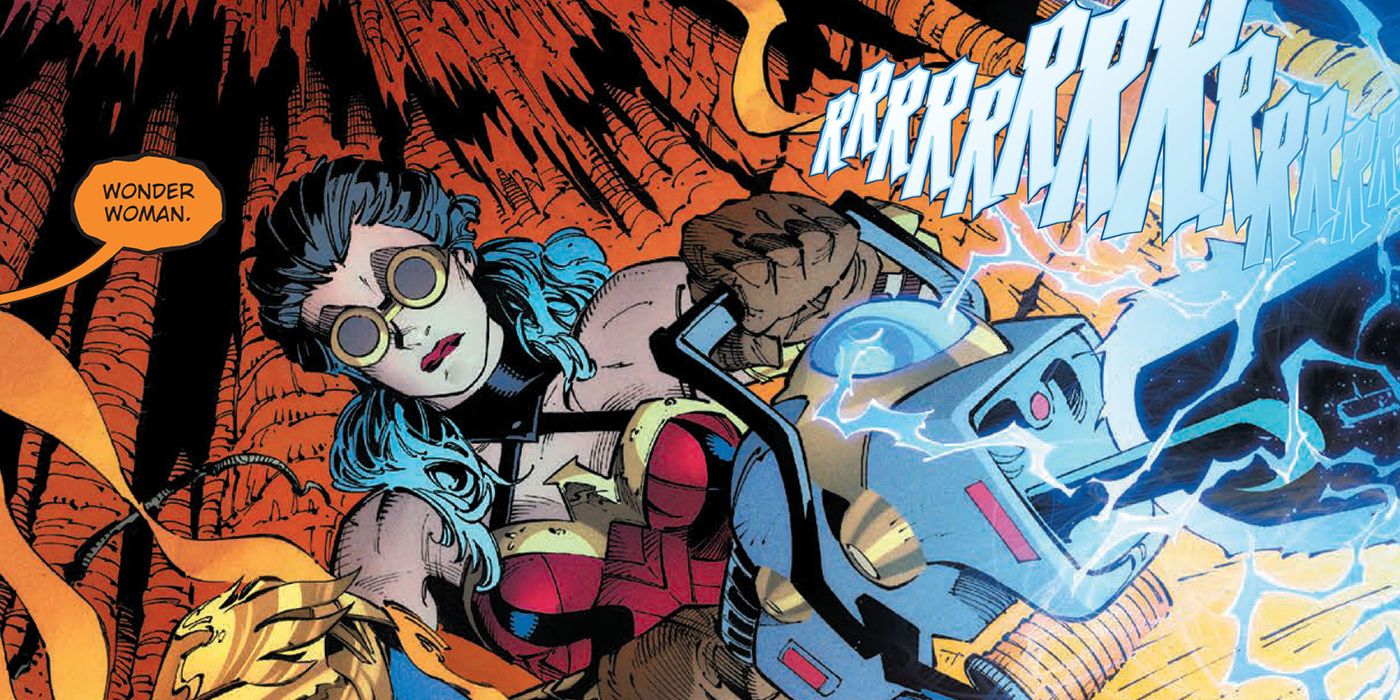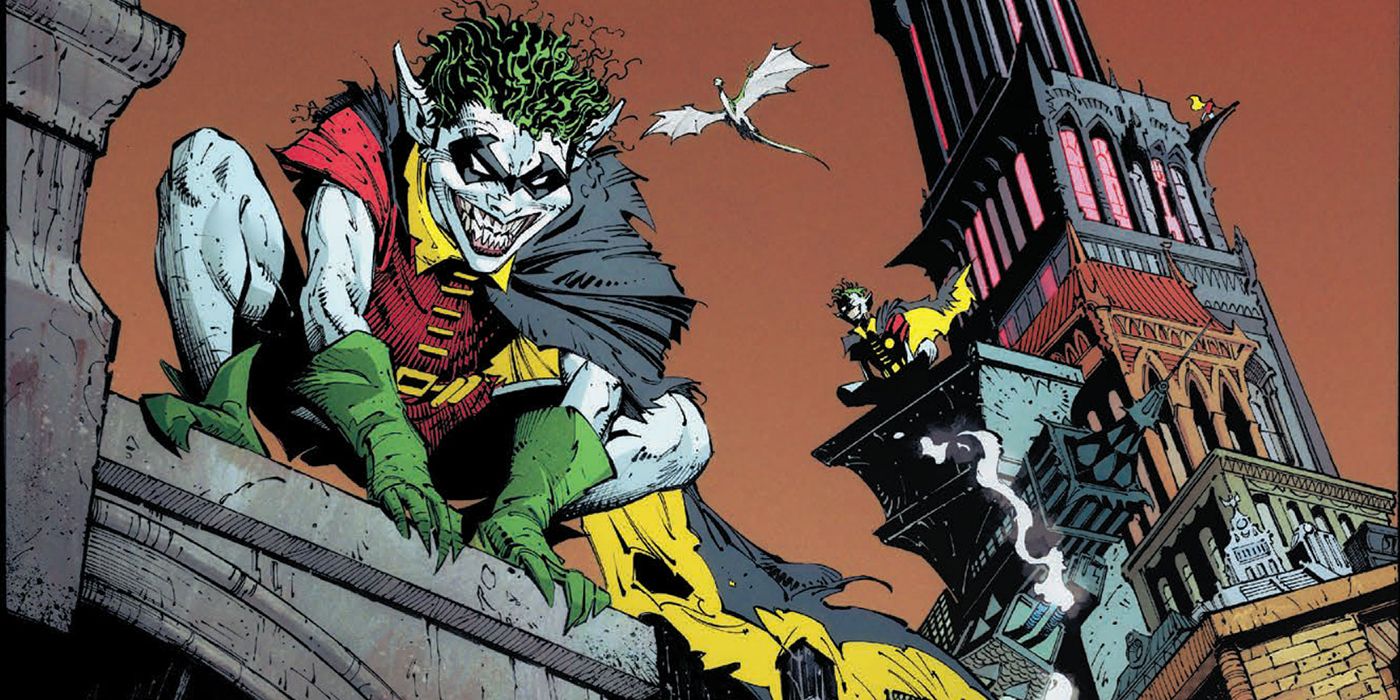The Dark Nights: Metal creative team of Scott Snyder, Greg Capullo, Jonathan Glapion and FCO Plascencia are back with another blockbuster DC event. The sequel Dark Nights: Death Metal spins out of Snyder's run on Justice League, with Perpetua and the Batman Who Laughs reshaping the entire DC Universe in their own, twisted vision. With the first issue of Death Metal now on sale, fans and readers will have many questions concerning the twists and turns in store, so we went directly to the source to gain some answers.
CBR participated in a video conference call with Snyder ahead of the release of Death Metal #1. The prolific writer discussed which characters fans can expect to see in the event, how crises from the past will come back into play, and what makes Robin King Death Metal's most terrifying new villain.
CBR: Similar to how Dark Nights: Metal reintroduced Hawkman back into DC continuity, can we expect the same thing to happen for another hero or heroes by the time Death Metal concludes?
Scott Snyder: Were trying to do that with a few people. So Jonah Hex is in it. Sgt. Rock is in it. Sgt. Rock is kind of the narrator of the whole thing, which is a lot of fun for me and Greg. He's the one trying to give a pep talk to comics. And he's definitely off his rocker because you'll see by the end of issue one, there are reasons he's kind of half-crazy the whole time.
And also, Lobo is another one that we really were trying to bring back and give some real legs to again, and it's the classic iteration, but in a new way. And yeah, there are some surprises, Superboy-Prime and a bunch of other characters are coming back in ways that kind of reframe them. They're still the originals.
Snyder then began to tease the kind of adventures our heroes will be undertaking, as they soon realize the path to victory lies in DC's past.
Basically, the story is to save the DC Universe, the heroes realize they have to go into the Dark Multiverse and find the crises that happened in the past and collect the energy from those and use it to restart the DC Universe in a different way. When they go into the Dark, they don't expect the crises have been twisted in a way that they don't expect. So you're going to see a bunch of characters there from the original series. You'll see Darkseid and all kinds of characters reframed.
So, I think a lot of the idea with this was to try and bring back some characters that fit the idea of a war -- that fit the idea of and themes of rebellion -- battling to throw off old systems and trying to find new ways of doing things; throwing off oppressive overlords. So there's even a Revolutionary War reference in the first issue, so [we're] trying to pick characters that fit that from different times and then bringing them in to surprise you and then reframing of characters that you're really familiar with in ways that will also -- I think -- catch you off-guard by the difference in the way that they're thinking and behaving but still remain true to their core.
For example, when they get to Final Crisis, it's a world where Darkseid won, and he's now old. And he's Anti-Life to everything. So you see him in a way that you haven't seen him before. And part of it is fun because he was a baby in the first Metal. So we want everything to be surprising and invigorating because it's a rethinking of what these characters are capable of and what they mean at different times without changing who they are. And Jarro is back in it. All kinds of characters are in it.
Andrew Dyce from Screen Rant: You've spoken about how Metal was a very different kind of adventure you were setting off on, and while it hasn't stopped, it continued for you personally from a creative standpoint, where you're speaking about constantly wanting to challenge yourself and get better and raise the stakes. Coming out of Metal and going into Death Metal, did you think, "This is how I'm changing the roadmap," to up your own game?
There were a few. It was just disconnected at that time. It was almost an "Experiment Metal." To be frank, DC really saw Doomsday Clock and some other things as the levers that were going to pull whatever was on the other side of Rebirth and Metal. The first one was really just me, Greg [Capullo] and Jonathan [Glapion] and FCO getting to do something that we thought would create a pocket area for us to build a story. It was about the things we cared about on the other side, like Justice League, if we could do it.
And so it wasn't designed to have the kind of broad impact that it wound up having at that moment. So there was a lot of last-minute figuring out of how we can shape some things in the line in a way that we can bring in different talent. So this time we wanted to go in prepared. There's no flying by the seat of our pants, you know what I mean? There's a very set plan. And there was a lot of change. There's a lot of change about what was going to be on the other side with [Death] Metal, with some of the Generation stuff that was being planned before we were doing it. We were always supportive -- just to be clear -- even when we didn't have a way of connecting to it, or I didn't have a way into it story-wise for myself. Dan [DiDio] and I are still very close. He's responsible for my whole career. He's the guy that gave me a chance on 12 issues with Detective Comics and let me work with Jock and Francesco [Francavilla] when I was nobody. And even when we had big creative differences over the years -- which we did have often -- he still supported me and let me do it myself. And I supported him when he did things that I didn't agree with.
So it was kind of like the first Metal all over again where I was like, "Okay, look, no big deal, we'll do our thing and if they want to use some of this stuff, great, and if they don't, we have plans to do different kind of work on the other side of this for a little while, anyway." And then with Dan exiting, it became really fluid again, in terms of what we were going to do. And so now some of the planning with Jim [Lee] and Bob [Harras] is much more connective. So we are helping to architect or chime in with editorial about some of the stuff. Editorial has been great about their plans now, and they're really something to crow about on our part. I'm excited about the talent they're looking at. I'm excited about the stories and characters they want to highlight.
So Death Metal is more plugged in than we had hoped. I think some of Metal was more conservative in terms of what we were able to do and what we were ever expected to be able to do. And this time, we don't have a lot to lose -- this team never acts like we do anyway -- but we don't have anything to prove. Comics should cast a really wide net and be inclusive and be daring, and every part that seems to be at war with itself right now can work together in different ways. That's part of what I'm hoping for on the other side. Not just the books coming out or story changes or creative changes, but some of the initiatives that the company is going to try out and embrace later are really forward-thinking and exciting.
The Death Metal checklist you recently shared on Twitter teased The Last 52 and Robin King. You previously said in a prior CBR interview that Robin King is the scariest character you've ever created. While both are farther down the line in Death Metal's story, I was curious what makes Robin King more terrifying than The Batman Who Laughs, who has already cemented himself as a breakout character?
Well The Batman Who Laughs is terrifying to me because he is a Bruce Wayne who was once good but is now wholly evil…and the horror of that transition being so final and deadly is what makes him so scary. He’s Batman gone evil at the peak of his career.
The Robin King is evil in the way the Batman Who Laughs is, but he’s almost scarier to me because he was always that way; he’s never been anything else. As a child, all he did was think about ways to kill his heroes...and wait until you see his belt!
Is there one moment in Death Metal that you're most excited to see the fan reaction to?
Yes, but it’s the end, so I can’t tell you what it is! Only that Wonder Woman is at the heart of it.
Dark Nights: Death Metal #1, by Scott Snyder, Greg Capullo, Jonathan Glapion and FCO Plascencia, is on sale now from DC.




